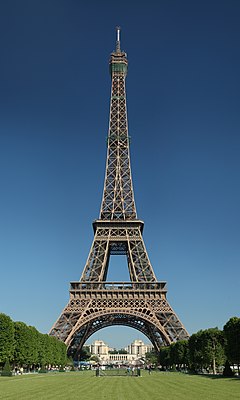
Constructed in 1889 as the entrance to the 1889 World's Fair, it was initially criticized by some of France's leading artists and intellectuals for its design, but it has become a global cultural icon of France and one of the most recognisable structures in the world.[3] The Eiffel Tower is the most-visited paid monument in the world; 6.91 million people ascended it in 2015.
-metal: metal
-tall tower: haute tour
-flashing lights: lumieres clignotantes
-elevator: ascensour
-View of Paris: vue du Paris
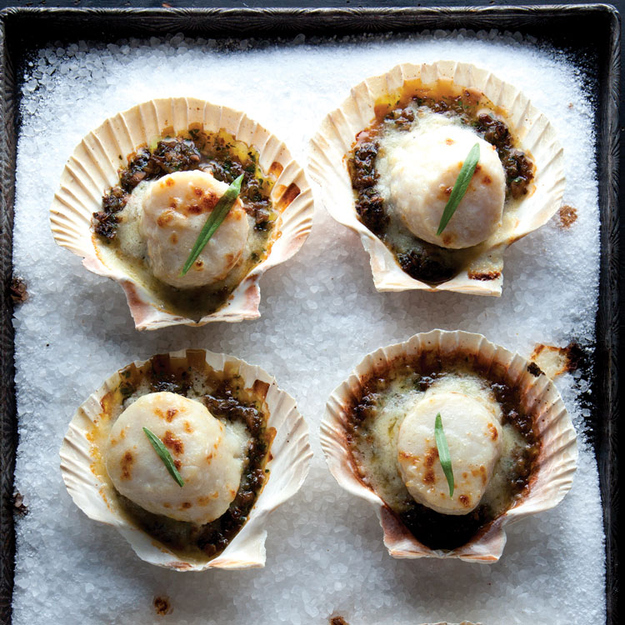
Coquilles Saint-Jacques
Tarte Tatin
Notre Dame Cathedral:

As the cathedral of the Archdiocese of Paris, Notre-Dame is the parish that contains the cathedra, or official chair, of the Archbishop of Paris, currentlyCardinal André Vingt-Trois.[4] The cathedral treasury is notable for its reliquarywhich houses some of Catholicism's most important first-class relics including the purported Crown of Thorns, a fragment of the True Cross, and one of theHoly Nails.
-cathedral: cathedrel
-stone: pierre
-church: eglise
-stained glass: vitrail
-two towers: deux tours
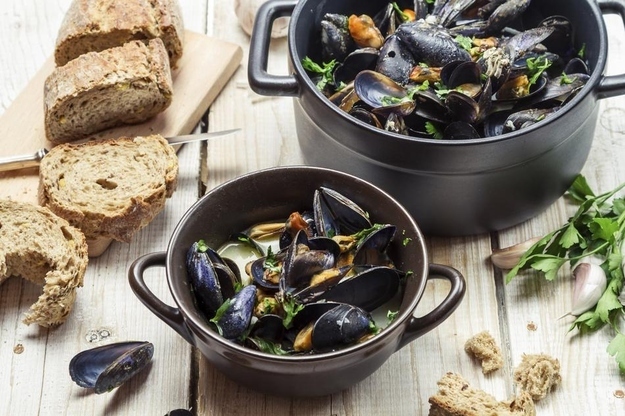
Moules Marinieres

Clafoutis
The Louvre:

The museum is housed in the Louvre Palace, originally built as a fortress in the late 12th century under Philip II. Remnants of the fortress are visible in the basement of the museum. The building was extended many times to form the present Louvre Palace. In 1682, Louis XIV chose the Palace of Versailles for his household, leaving the Louvre primarily as a place to display the royal collection, including, from 1692, a collection of ancient Greek and Roman sculpture.[2] In 1692, the building was occupied by the Académie des Inscriptions et Belles Lettres and the Académie Royale de Peinture et de Sculpture, which in 1699 held the first of a series of salons. The Académie remained at the Louvre for 100 years.[3] During the French Revolution, the National Assembly decreed that the Louvre should be used as a museum to display the nation's masterpieces.


Clafoutis
The Louvre:

The museum is housed in the Louvre Palace, originally built as a fortress in the late 12th century under Philip II. Remnants of the fortress are visible in the basement of the museum. The building was extended many times to form the present Louvre Palace. In 1682, Louis XIV chose the Palace of Versailles for his household, leaving the Louvre primarily as a place to display the royal collection, including, from 1692, a collection of ancient Greek and Roman sculpture.[2] In 1692, the building was occupied by the Académie des Inscriptions et Belles Lettres and the Académie Royale de Peinture et de Sculpture, which in 1699 held the first of a series of salons. The Académie remained at the Louvre for 100 years.[3] During the French Revolution, the National Assembly decreed that the Louvre should be used as a museum to display the nation's masterpieces.
-Mona Lisa
-Pyramid: pyramide
-Paintings: tableaux
-tourists: touristes
-Venus de Milo

Blanquette de Veau

Crepes

Crepes
Arc de Triomphe:

The Arc de Triomphe is the linchpin of the Axe historique (historic axis) – a sequence of monuments and grand thoroughfares on a route which runs from the courtyard of the Louvre to the Grande Arche de la Défense. The monument was designed by Jean Chalgrin in 1806 and its iconographic program pitsheroically nude French youths against bearded Germanic warriors in chain mail. It set the tone for public monuments with triumphant patriotic messages.
-arc: arc
-soldiers: soldats
-carvings: sculptures
-flat top: haut plat
-Champs Elysees
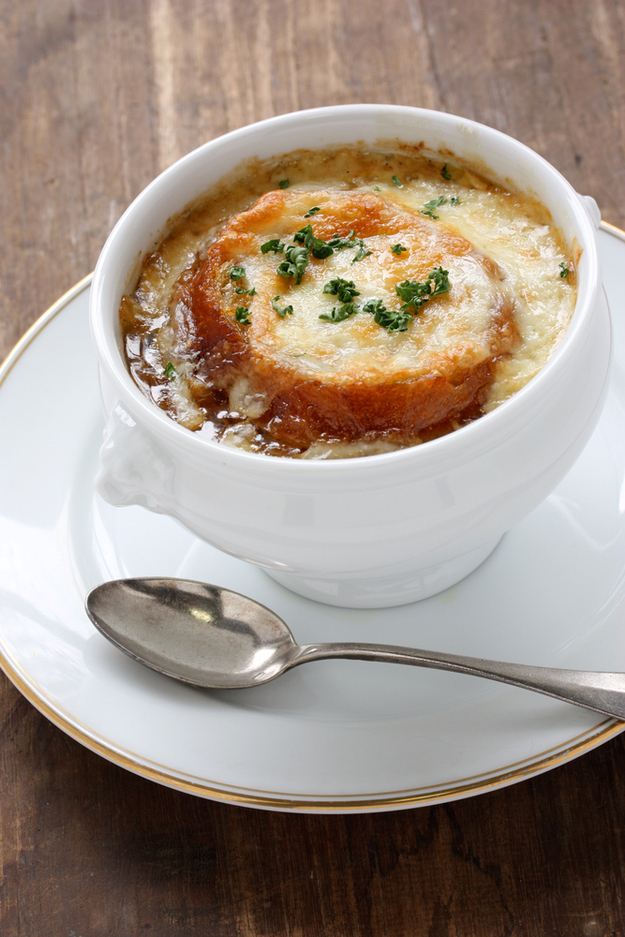
Soupe A L'oignon

Paris Brest

The Basilica of the Sacred Heart of Paris, commonly known as Sacré-Cœur Basilica and often simply Sacré-Cœur is a Roman Catholic church and minor basilica, dedicated to the Sacred Heart of Jesus, in Paris, France. A popular landmark, the basilica is located at the summit of the butte Montmartre, the highest point in the city. Sacré-Cœur is a double monument, political and cultural, both a national penance for the defeat of France in the 1871 Franco-Prussian War and the socialistParis Commune of 1871
hill=hill
pointy=pointures
rounded=arrondis
green=vert
copper=cuivre
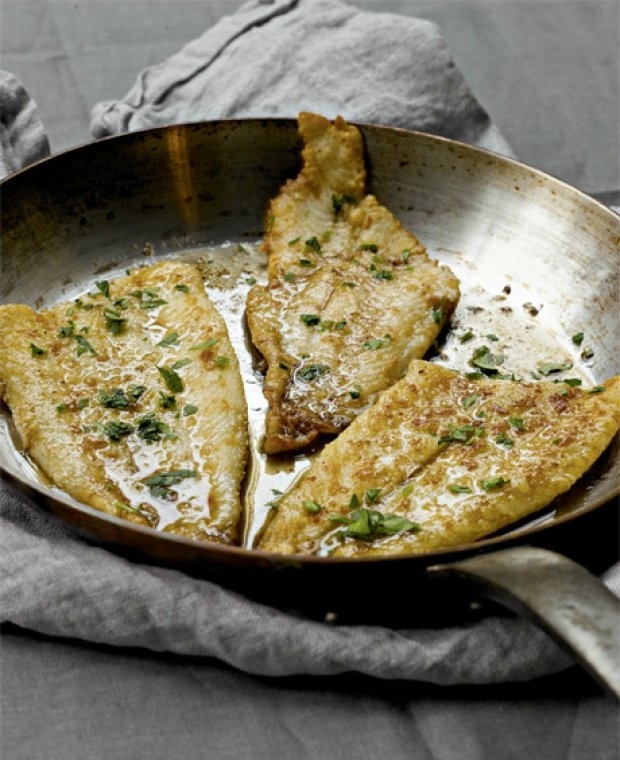
Paris Brest

The Basilica of the Sacred Heart of Paris, commonly known as Sacré-Cœur Basilica and often simply Sacré-Cœur is a Roman Catholic church and minor basilica, dedicated to the Sacred Heart of Jesus, in Paris, France. A popular landmark, the basilica is located at the summit of the butte Montmartre, the highest point in the city. Sacré-Cœur is a double monument, political and cultural, both a national penance for the defeat of France in the 1871 Franco-Prussian War and the socialistParis Commune of 1871
hill=hill
pointy=pointures
rounded=arrondis
green=vert
copper=cuivre

Sole Meuniere

Eclair au Chocolat

The Jardin du Luxembourg, or the Luxembourg Garden, located in the 6th arrondissement of Paris, was created beginning in 1612 by Marie de' Medici, the widow of King Henry IV of France, for a new residence she constructed, the Luxembourg Palace. The garden today is owned by the French Senate, which meets in the Palace. It covers 23 hectares and is known for its lawns, tree-lined promenades, flowerbeds, the model sailboats on its circular basin, and for the picturesque Medici Fountain, built in 1620.
garden=jardin
flower=fleur
bush=buissons
trees=arbres
cement=ciment

Kouign Amann
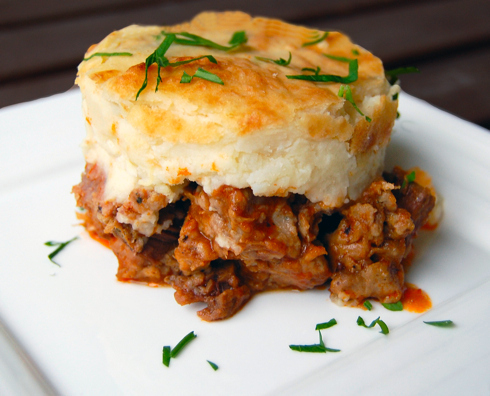

Eclair au Chocolat

The Jardin du Luxembourg, or the Luxembourg Garden, located in the 6th arrondissement of Paris, was created beginning in 1612 by Marie de' Medici, the widow of King Henry IV of France, for a new residence she constructed, the Luxembourg Palace. The garden today is owned by the French Senate, which meets in the Palace. It covers 23 hectares and is known for its lawns, tree-lined promenades, flowerbeds, the model sailboats on its circular basin, and for the picturesque Medici Fountain, built in 1620.
garden=jardin
flower=fleur
bush=buissons
trees=arbres
cement=ciment
Kouign Amann

Hachis Parmentier
Musee d'Orsay:

The museum holds mainly French art dating from 1848 to 1914, including paintings, sculptures, furniture, and photography. It houses the largest collection of impressionist andpost-Impressionist masterpieces in the world, by painters including Monet,Manet, Degas, Renoir, Cézanne, Seurat, Sisley, Gauguin and Van Gogh. Many of these works were held at the Galerie nationale du Jeu de Paume prior to the museum's opening in 1986. It is one of the largest art museums in Europe.
Photography=photographie
Clock = horloge
Arched roof= toit en arc
Manet= Manet
Train Station= gare

Boudin Noir Aux Pommes

Creme Brulee
Versailles Palace:

When the château was built, Versailles was a country village; today, however, it is a wealthy suburb of Paris, some 20 kilometres (12 miles) southwest of the French capital. The court of Versailles was the centre of political power in France from 1682, when Louis XIV moved from Paris, until the royal family was forced to return to the capital in October 1789 after the beginning of the French Revolution. Versailles is therefore famous not only as a building, but as a symbol of the system of absolute monarchy of the Ancien Régime.
1. The garden = Le jardin
2. Trimmed trees = Des arbres tailles
3. Statues = Des statues
4. The marble court = La cour de marbre
5. The king's apartment = L'appartement du roi
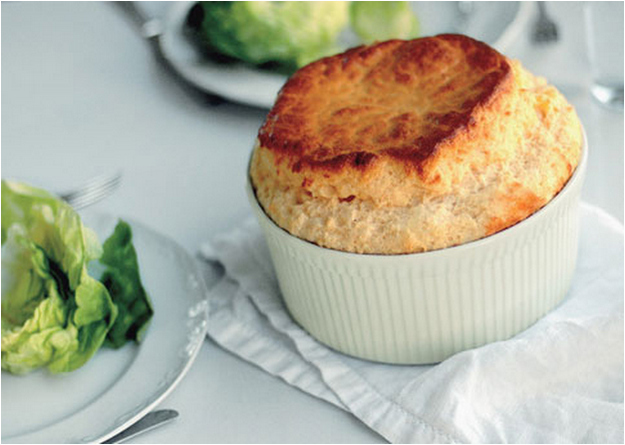
Cheese Souffle

Far Breton
Sainte Chapelle:

Begun some time after 1238 and consecrated on 26 April 1248,[2] the Sainte-Chapelle is considered among the highest achievements of the Rayonnant period of Gothic architecture. It was commissioned by King Louis IX of France to house his collection of Passion relics, including Christ's Crown of Thorns—one of the most important relics in medieval Christendom.
Biblical Stories: histoires bibliques
Chapel: chapelle
Stained Glass Windows: vitraux
Holy Relics: sainte reliques
Chandelier: lustre
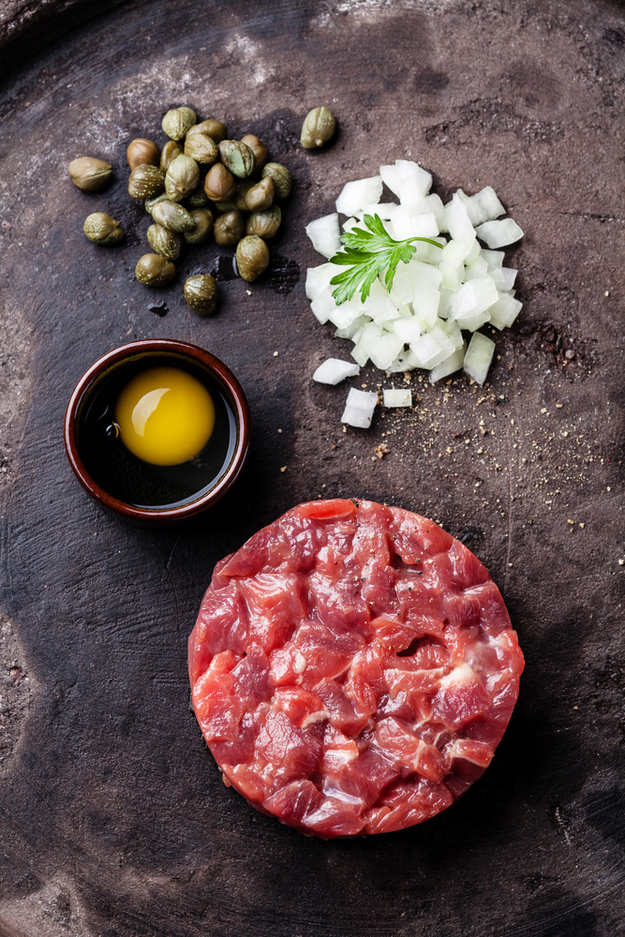
Steak Tartare

Gateau Basque
Palais Garnier:

The interior consists of interweaving corridors, stairwells, alcoves and landings allowing the movement of large numbers of people and space for socializing during intermission. Rich with velvet, gold leaf, and cherubim and nymphs, the interior is characteristic of Baroque sumptuousness.
1. stairs = escaliers
2. chairs = chaises
3. golden art = art d'or
4. colorful painting = peinture coloree
5. curtains = rideaux
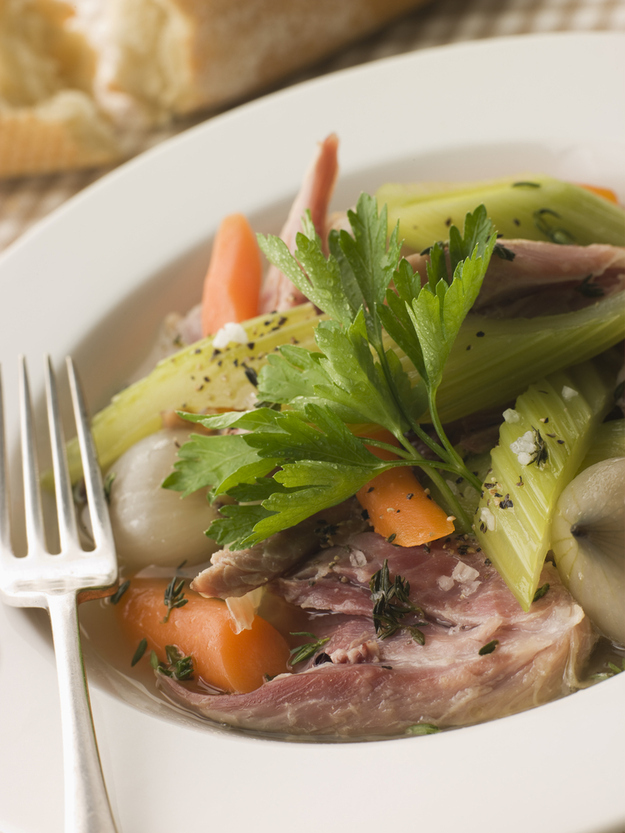
Pot-au-feu

Gateau au Yoaurt
Les Invalides:

Because of its location and significance, the Invalides served as the scene for several key events in French history. On 14 July 1789 it was stormed by Parisian rioters who seized the cannons and muskets stored in its cellars to use against the Bastille later the same day. Napoleon was entombed under the dome of the Invalides with great ceremony in 1840. In December 1894 the degradation of Captain Alfred Dreyfus was held before the main building, while his subsequent rehabilitation ceremony took place in a courtyard of the complex in 1906.
1. The dome = le dome
2. The tomb of Napoleon Bonaparte = Le tombeau de Napoleon Bonaparte
3. A church = Un eglise
4. A chapel = Une chapelle
5. Museums = Des musees
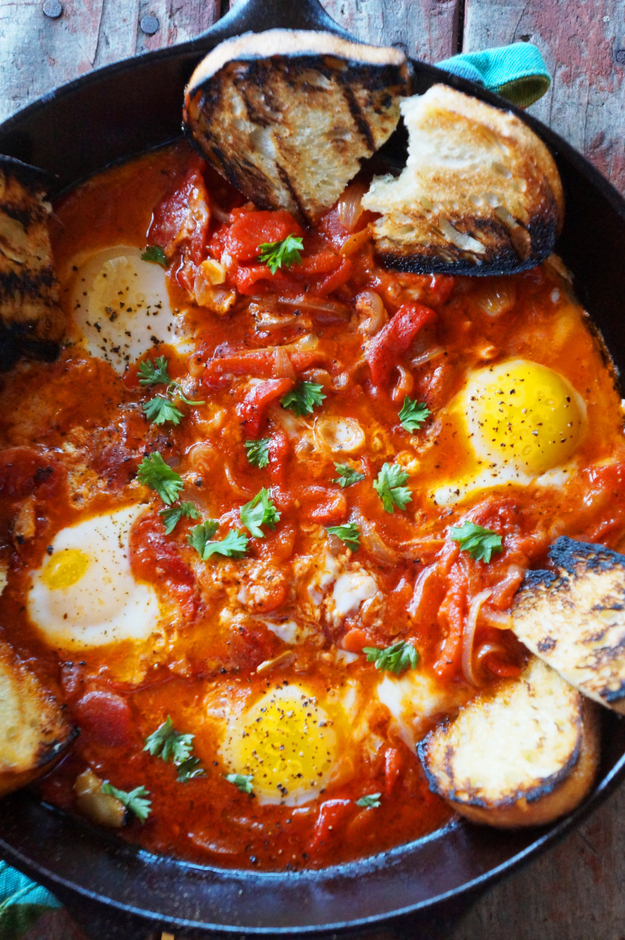
Piperade

French Lemon Tart
Tuileries Garden:

The Tuileries Garden (French: Jardin des Tuileries, IPA: [ʒaʁdɛ̃ de tɥilʁi]) is a public garden located between the Louvre Museum and the Place de la Concorde in the 1st arrondissement of Paris. Created by Catherine de Medici as the garden of the Tuileries Palace in 1564, it was eventually opened to the public in 1667, and became a public park after the French Revolution. In the 19th and 20th century, it was the place where Parisians celebrated, met, promenaded, and relaxed.[1]
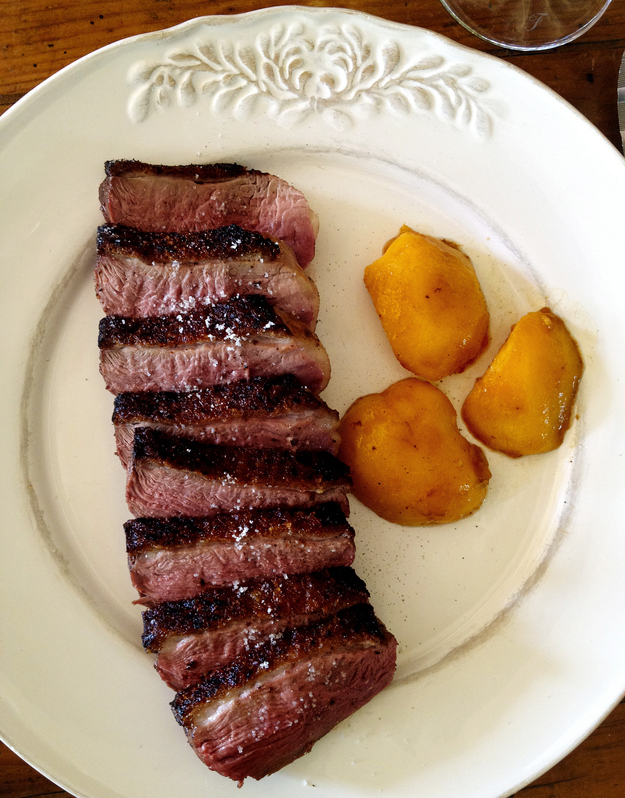
Magret au Canard

Caneles
Pont Alexandre III:

The Beaux-Arts style bridge, with its exuberant Art Nouveau lamps, cherubs,nymphs and winged horses at either end, was built between 1896 and 1900. It is named after Tsar Alexander III, who had concluded the Franco-Russian Alliance in 1892. His son Nicholas II laid the foundation stone in October 1896. The style of the bridge reflects that of the Grand Palais, to which it leads on the right bank.
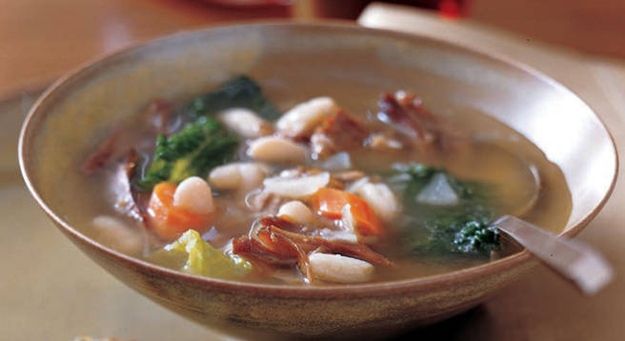
Garbure

Bugnes Lyonaisses
Hotel de Ville:

The Hôtel de Ville (French pronunciation: [otɛl də vil], City Hall) in Paris, France, is the building housing the city's local administration. Standing on the place de l'Hôtel-de-Ville in the 4th arrondissement, it has been the headquarters of the municipality of Paris since 1357. It serves multiple functions, housing the local administration, the Mayor of Paris (since 1977), and also serves as a venue for large receptions.
Ballroom:salle de bal
Famous statues:statues célèbres
Square: carré
Chandelier: lustre
Archways: arcades
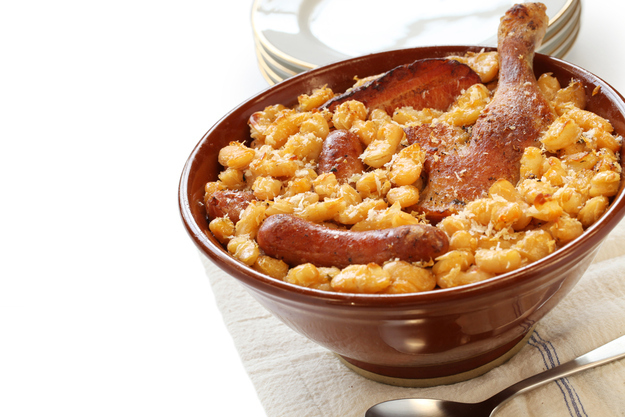
Cassoulet

Tarte Tropezienne
Disneyland Paris:

The resort covers 4,800 acres (19 km2)[3] and encompasses two theme parks, several resort hotels, a shopping, dining, and entertainment complex, and a golf course, in addition to several additional recreational and entertainment venues. Disneyland Park is the original theme park of the complex, opening with the resort on 12 April 1992. A second theme park, Walt Disney Studios Park, opened in 2002. The resort is the second Disney park to open outside the United States, following the opening of the Tokyo Disney Resort in 1983.
1. a pink castle = un chateau rose
2. micke y mouse
3. colored lights = lumieres colorees
4. roller coasters = montagnes russes
5. animated characters = personnages animes
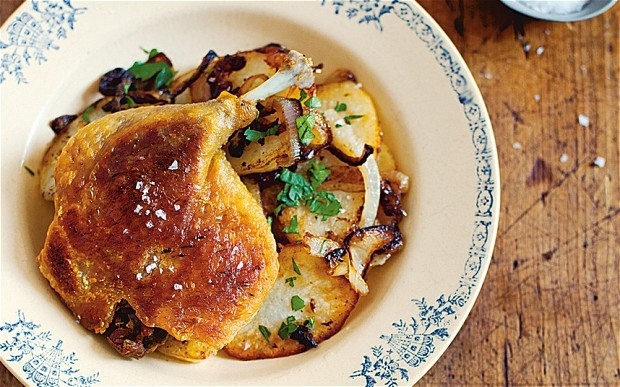
Confit de Canard

Macarons
Place de la Concorde:

The place was designed by Ange-Jacques Gabriel in 1755 as a moat-skirtedoctagon between the Champs-Élysées to the west and the Tuileries Garden to the east. Decorated with statues and fountains, the area was named Place Louis XV to honor the king at that time. The square showcased an equestrian statue of the king, which had been commissioned in 1748 by the city of Paris, sculpted mostly by Edmé Bouchardon, and completed by Jean-Baptiste Pigalleafter the death of Bouchardon.
1. the obelisk = l'obelisque
2. the fountain = la fontaine
3. a taxi = un taxi
4. the hieroglyphics = les hieroglyphes
5. the cross walk = le passage pour pistons
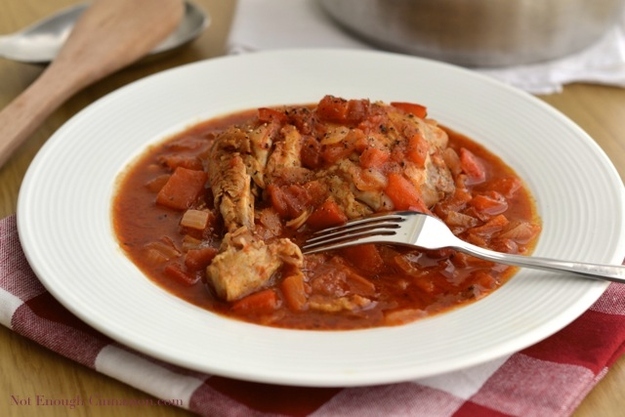
Poulet Basquiase

French Fig Tart
Paris Catacombs:

The Catacombs are among the 14 City of Paris Museums managed by Paris Musées since January 1, 2013. The catacombs are formally known asl'Ossuaire Municipal or Catacombes officiels and have been called "The World's Largest Grave" due the number of individuals buried.[2] Although the ossuary covers only a small section of the underground "les carrières de Paris" ("the quarries of Paris"), Parisians today often refer to the entire tunnel network as "the catacombs".
1. skulls = crânes
2. bones = os
3. ghosts = fantomes
4. dirt = salete
5. spirits = esprits
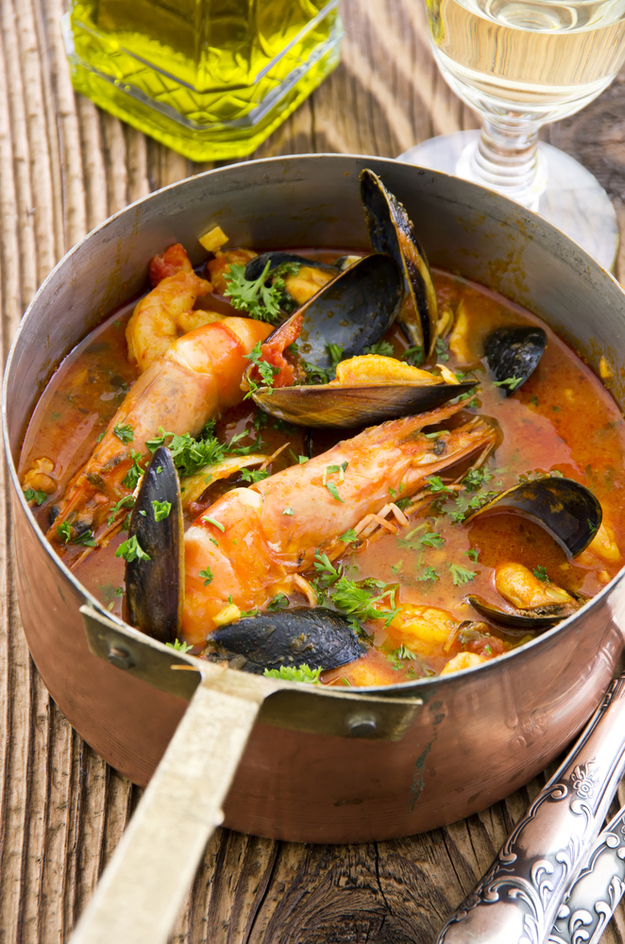
Bouillabaise

Saint Honore
Latin Quarter:

Known for its student life, lively atmosphere and bistros, the Latin Quarter is the home to a number of higher education establishments besides the university itself, such as the Lang–Martinez Psychiatric Hospital, the École des Mines de Paris, Panthéon-Assas University, the Schola Cantorum, and the Jussieu university campus. Other establishments such as the École Polytechnique have relocated in recent times to more spacious settings.
1. a neon signs = une enseigne au neon
2. an italien flag = un signe italien
3. some bikes = des velos
4. the cobblestone = le pave
5. a menu = un menu
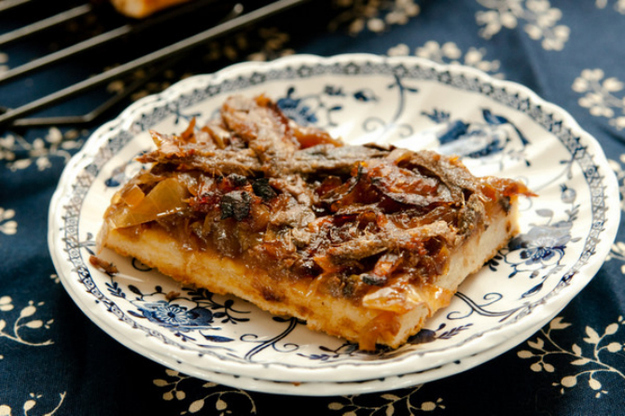
Pissaladiere

Ispahan
St Germain des Pres:

The quarter has several famous cafés, including Les Deux Magots, Café de Flore, le Procope, and the Brasserie Lipp, and a large number of bookstores and publishing houses. In the 1940s and 1950s, it was the centre of theexistentialist movement (associated with Jean-Paul Sartre and Simone de Beauvoir. It is also home to the École des Beaux-Arts, the famed school of fine arts, and the Musée national Eugène Delacroix, in the former apartment and studio of painter Eugène Delacroix.
posters = des affiches
Motorcycles = La moto
Apartments = appartements
Parking lots = Places de parking
Traffic signs = Panneaux de signalisation
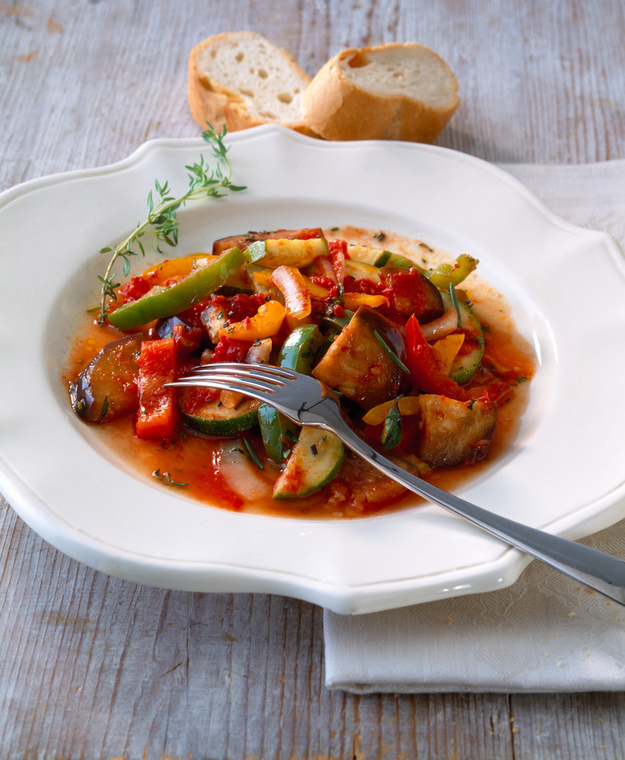
Ratatouille

Madeleins
Montmartre:

At the beginning of the twentieth century, during the Belle Époque, many artists had studios or worked in or around Montmartre, including Salvador Dalí,Amedeo Modigliani, Claude Monet, Henri de Toulouse-Lautrec, Piet Mondrian,Pablo Picasso, Camille Pissarro and Vincent van Gogh. Montmartre is also the setting for several hit films. This site is served by metro line 2 stations of Anvers,Pigalle and Blanche and the line 12 stations of Pigalle, Abbesses, Lamarck - Caulaincourt and Jules Joffrin.
1. the moulin rouge = le moulin rouge
2. a windmill = un moulin a vent
3. the metro = le metro
4. the avenues = les avenues
5. a chocolate shop = use boutique de chocolate
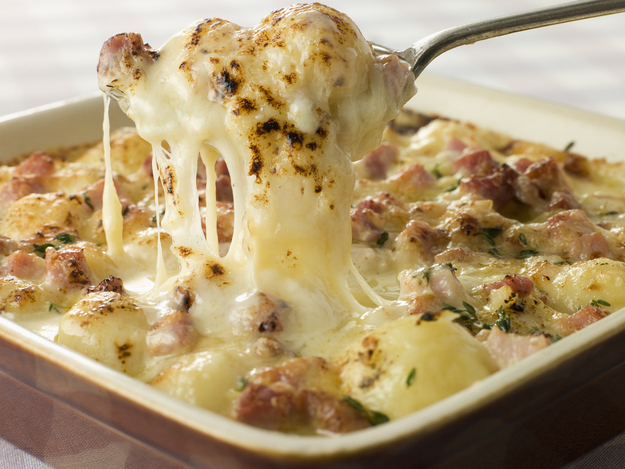
Tartiflette

Chouquettes
Musee d'Orsay:

The museum holds mainly French art dating from 1848 to 1914, including paintings, sculptures, furniture, and photography. It houses the largest collection of impressionist andpost-Impressionist masterpieces in the world, by painters including Monet,Manet, Degas, Renoir, Cézanne, Seurat, Sisley, Gauguin and Van Gogh. Many of these works were held at the Galerie nationale du Jeu de Paume prior to the museum's opening in 1986. It is one of the largest art museums in Europe.
Photography=photographie
Clock = horloge
Arched roof= toit en arc
Manet= Manet
Train Station= gare

Boudin Noir Aux Pommes

Creme Brulee

When the château was built, Versailles was a country village; today, however, it is a wealthy suburb of Paris, some 20 kilometres (12 miles) southwest of the French capital. The court of Versailles was the centre of political power in France from 1682, when Louis XIV moved from Paris, until the royal family was forced to return to the capital in October 1789 after the beginning of the French Revolution. Versailles is therefore famous not only as a building, but as a symbol of the system of absolute monarchy of the Ancien Régime.
1. The garden = Le jardin
2. Trimmed trees = Des arbres tailles
3. Statues = Des statues
4. The marble court = La cour de marbre
5. The king's apartment = L'appartement du roi

Cheese Souffle
Far Breton
Sainte Chapelle:

Begun some time after 1238 and consecrated on 26 April 1248,[2] the Sainte-Chapelle is considered among the highest achievements of the Rayonnant period of Gothic architecture. It was commissioned by King Louis IX of France to house his collection of Passion relics, including Christ's Crown of Thorns—one of the most important relics in medieval Christendom.
Biblical Stories: histoires bibliques
Chapel: chapelle
Stained Glass Windows: vitraux
Holy Relics: sainte reliques
Chandelier: lustre

Steak Tartare

Gateau Basque
Palais Garnier:

The interior consists of interweaving corridors, stairwells, alcoves and landings allowing the movement of large numbers of people and space for socializing during intermission. Rich with velvet, gold leaf, and cherubim and nymphs, the interior is characteristic of Baroque sumptuousness.
1. stairs = escaliers
2. chairs = chaises
3. golden art = art d'or
4. colorful painting = peinture coloree
5. curtains = rideaux

Pot-au-feu
Gateau au Yoaurt
Les Invalides:

Because of its location and significance, the Invalides served as the scene for several key events in French history. On 14 July 1789 it was stormed by Parisian rioters who seized the cannons and muskets stored in its cellars to use against the Bastille later the same day. Napoleon was entombed under the dome of the Invalides with great ceremony in 1840. In December 1894 the degradation of Captain Alfred Dreyfus was held before the main building, while his subsequent rehabilitation ceremony took place in a courtyard of the complex in 1906.
1. The dome = le dome
2. The tomb of Napoleon Bonaparte = Le tombeau de Napoleon Bonaparte
3. A church = Un eglise
4. A chapel = Une chapelle
5. Museums = Des musees

Piperade
French Lemon Tart
Tuileries Garden:

The Tuileries Garden (French: Jardin des Tuileries, IPA: [ʒaʁdɛ̃ de tɥilʁi]) is a public garden located between the Louvre Museum and the Place de la Concorde in the 1st arrondissement of Paris. Created by Catherine de Medici as the garden of the Tuileries Palace in 1564, it was eventually opened to the public in 1667, and became a public park after the French Revolution. In the 19th and 20th century, it was the place where Parisians celebrated, met, promenaded, and relaxed.[1]
1. Trees = Des arbres
2. Fountains = Des fontaines
3. The grass = L'herbe
4. Ice cream parlors = Des salons de crème glacée
5. The ferris wheel = La grande roue

Magret au Canard
Caneles
Pont Alexandre III:

The Beaux-Arts style bridge, with its exuberant Art Nouveau lamps, cherubs,nymphs and winged horses at either end, was built between 1896 and 1900. It is named after Tsar Alexander III, who had concluded the Franco-Russian Alliance in 1892. His son Nicholas II laid the foundation stone in October 1896. The style of the bridge reflects that of the Grand Palais, to which it leads on the right bank.
1. Statues = Des statues
2. The Seine river = La Seine
3. The Eiffel Tower = La Tour Eiffel
4. Invalides Bridge = Le pont des Invalides
5. Tourists = Des touristes

Garbure

Bugnes Lyonaisses
Hotel de Ville:

The Hôtel de Ville (French pronunciation: [otɛl də vil], City Hall) in Paris, France, is the building housing the city's local administration. Standing on the place de l'Hôtel-de-Ville in the 4th arrondissement, it has been the headquarters of the municipality of Paris since 1357. It serves multiple functions, housing the local administration, the Mayor of Paris (since 1977), and also serves as a venue for large receptions.
Ballroom:salle de bal
Famous statues:statues célèbres
Square: carré
Chandelier: lustre
Archways: arcades

Cassoulet
Tarte Tropezienne
Disneyland Paris:

The resort covers 4,800 acres (19 km2)[3] and encompasses two theme parks, several resort hotels, a shopping, dining, and entertainment complex, and a golf course, in addition to several additional recreational and entertainment venues. Disneyland Park is the original theme park of the complex, opening with the resort on 12 April 1992. A second theme park, Walt Disney Studios Park, opened in 2002. The resort is the second Disney park to open outside the United States, following the opening of the Tokyo Disney Resort in 1983.
1. a pink castle = un chateau rose
2. micke y mouse
3. colored lights = lumieres colorees
4. roller coasters = montagnes russes
5. animated characters = personnages animes

Confit de Canard

Macarons
Place de la Concorde:

The place was designed by Ange-Jacques Gabriel in 1755 as a moat-skirtedoctagon between the Champs-Élysées to the west and the Tuileries Garden to the east. Decorated with statues and fountains, the area was named Place Louis XV to honor the king at that time. The square showcased an equestrian statue of the king, which had been commissioned in 1748 by the city of Paris, sculpted mostly by Edmé Bouchardon, and completed by Jean-Baptiste Pigalleafter the death of Bouchardon.
1. the obelisk = l'obelisque
2. the fountain = la fontaine
3. a taxi = un taxi
4. the hieroglyphics = les hieroglyphes
5. the cross walk = le passage pour pistons

Poulet Basquiase
French Fig Tart
Paris Catacombs:

The Catacombs are among the 14 City of Paris Museums managed by Paris Musées since January 1, 2013. The catacombs are formally known asl'Ossuaire Municipal or Catacombes officiels and have been called "The World's Largest Grave" due the number of individuals buried.[2] Although the ossuary covers only a small section of the underground "les carrières de Paris" ("the quarries of Paris"), Parisians today often refer to the entire tunnel network as "the catacombs".
1. skulls = crânes
2. bones = os
3. ghosts = fantomes
4. dirt = salete
5. spirits = esprits

Bouillabaise
Saint Honore
Latin Quarter:

Known for its student life, lively atmosphere and bistros, the Latin Quarter is the home to a number of higher education establishments besides the university itself, such as the Lang–Martinez Psychiatric Hospital, the École des Mines de Paris, Panthéon-Assas University, the Schola Cantorum, and the Jussieu university campus. Other establishments such as the École Polytechnique have relocated in recent times to more spacious settings.
1. a neon signs = une enseigne au neon
2. an italien flag = un signe italien
3. some bikes = des velos
4. the cobblestone = le pave
5. a menu = un menu

Pissaladiere

Ispahan
St Germain des Pres:

The quarter has several famous cafés, including Les Deux Magots, Café de Flore, le Procope, and the Brasserie Lipp, and a large number of bookstores and publishing houses. In the 1940s and 1950s, it was the centre of theexistentialist movement (associated with Jean-Paul Sartre and Simone de Beauvoir. It is also home to the École des Beaux-Arts, the famed school of fine arts, and the Musée national Eugène Delacroix, in the former apartment and studio of painter Eugène Delacroix.
posters = des affiches
Motorcycles = La moto
Apartments = appartements
Parking lots = Places de parking
Traffic signs = Panneaux de signalisation

Ratatouille

Madeleins
Montmartre:

At the beginning of the twentieth century, during the Belle Époque, many artists had studios or worked in or around Montmartre, including Salvador Dalí,Amedeo Modigliani, Claude Monet, Henri de Toulouse-Lautrec, Piet Mondrian,Pablo Picasso, Camille Pissarro and Vincent van Gogh. Montmartre is also the setting for several hit films. This site is served by metro line 2 stations of Anvers,Pigalle and Blanche and the line 12 stations of Pigalle, Abbesses, Lamarck - Caulaincourt and Jules Joffrin.
1. the moulin rouge = le moulin rouge
2. a windmill = un moulin a vent
3. the metro = le metro
4. the avenues = les avenues
5. a chocolate shop = use boutique de chocolate

Tartiflette

Chouquettes
No comments:
Post a Comment